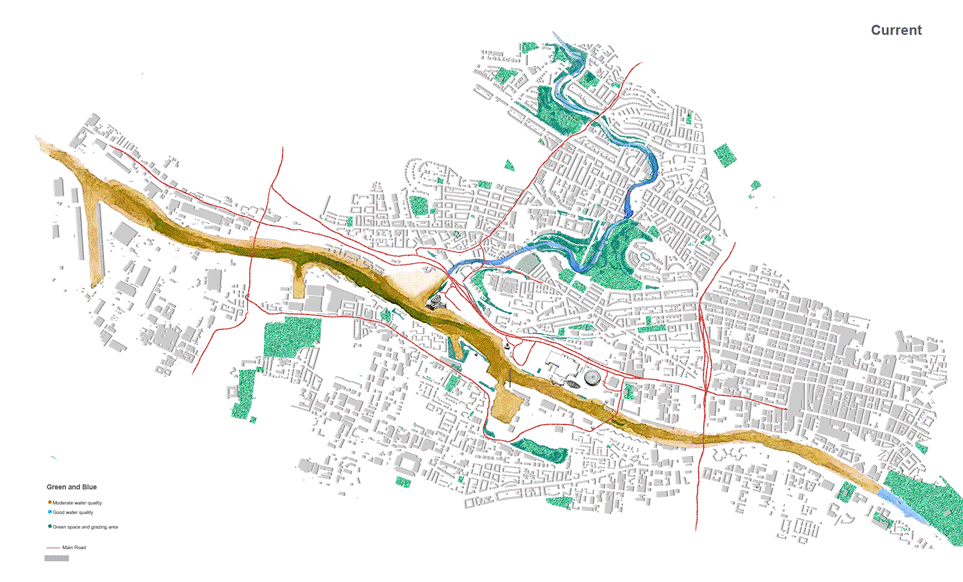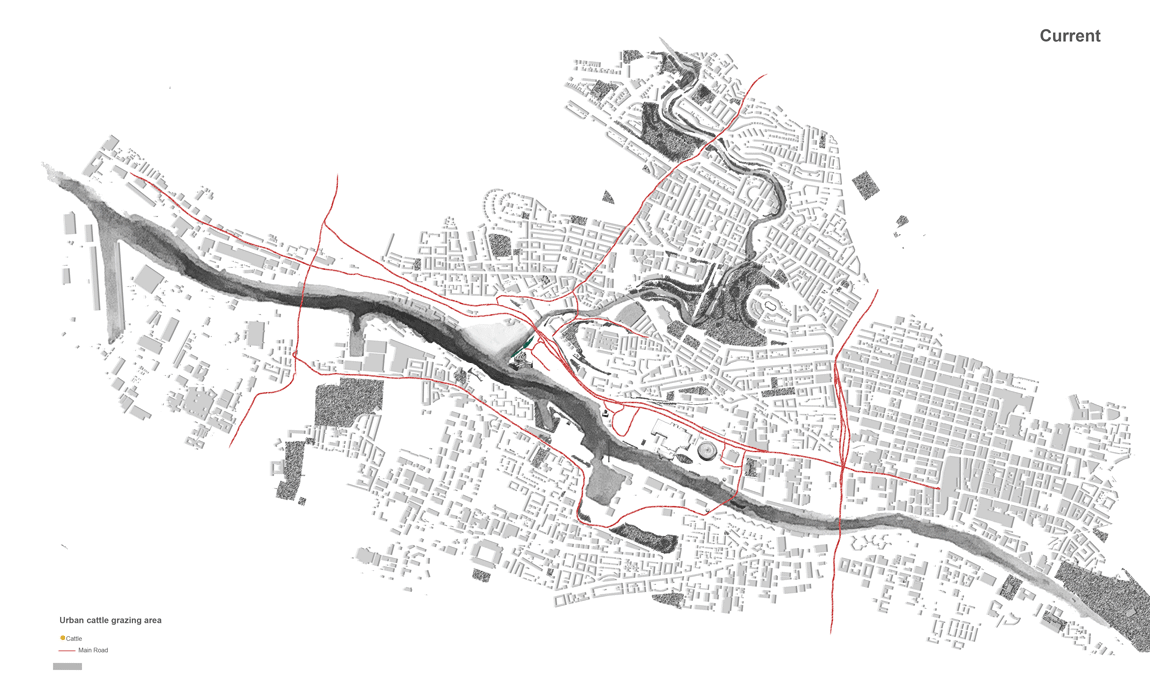Postgraduate Landscape Architect

A Glass of Memory aims to create a hybrid landscape of closed-loop urban ecological systems, based on the principles of industrial ecology, giving a prominent role to the reclamation of water within a restored urban ecosystem. The project focuses on the transformation of a vacant brownfield site along the River Clyde waterfront adjacent to Clydeside Distillery. This contemporary building incorporates the Pump House, an important Glasgow landmark and monument to the city’s industrial and dockland heritage. The designed distillery landscape will act as a prototype to the restoration of a forgotten urban waterfront landscape to one that provides cultural opportunities for Glasgow residents and its visitors. The project will provide a framework for the creation of designed semi-natural habitats which support an increase in biodiversity alongside future urban developments. It will demonstrate good practice for the transformation of an urban waterfront towards a more resilient, sustainable and productive space. At the same time, it will provide a place that provokes memories of Glasgow’s industrial heritage and Scottish natural landscapes, a space for cultural events, as well as shaping the waterfront into a more sculptural form that provides a more accessible and inclusive public realm. This design will create an innovative landscape, one that will inspire further inspirational development along the River Clyde to the benefit of humans and more-than-humans.
Part 1
Storytelling
No water city

Part 2
A glass of memory
and
Glasgow

The danger of climate change for the Scotch Whisky industry
According to SEPA (2020) the Scotch Whisky distilling industry will not survive without adequate supplies of clean water and that due to projected climate change impacts a regular supply of water cannot be guaranteed. The Scottish Whisky Association (2020) are having to contribute to the mitigation of future climate change impacts by redeveloping their distilleries into more sustainable buildings powered by renewable energy and where all their waste products are either recycled or reused, including the reclamation of water.
Genius loci of Glasgow and inspirations from the site

Site inventory
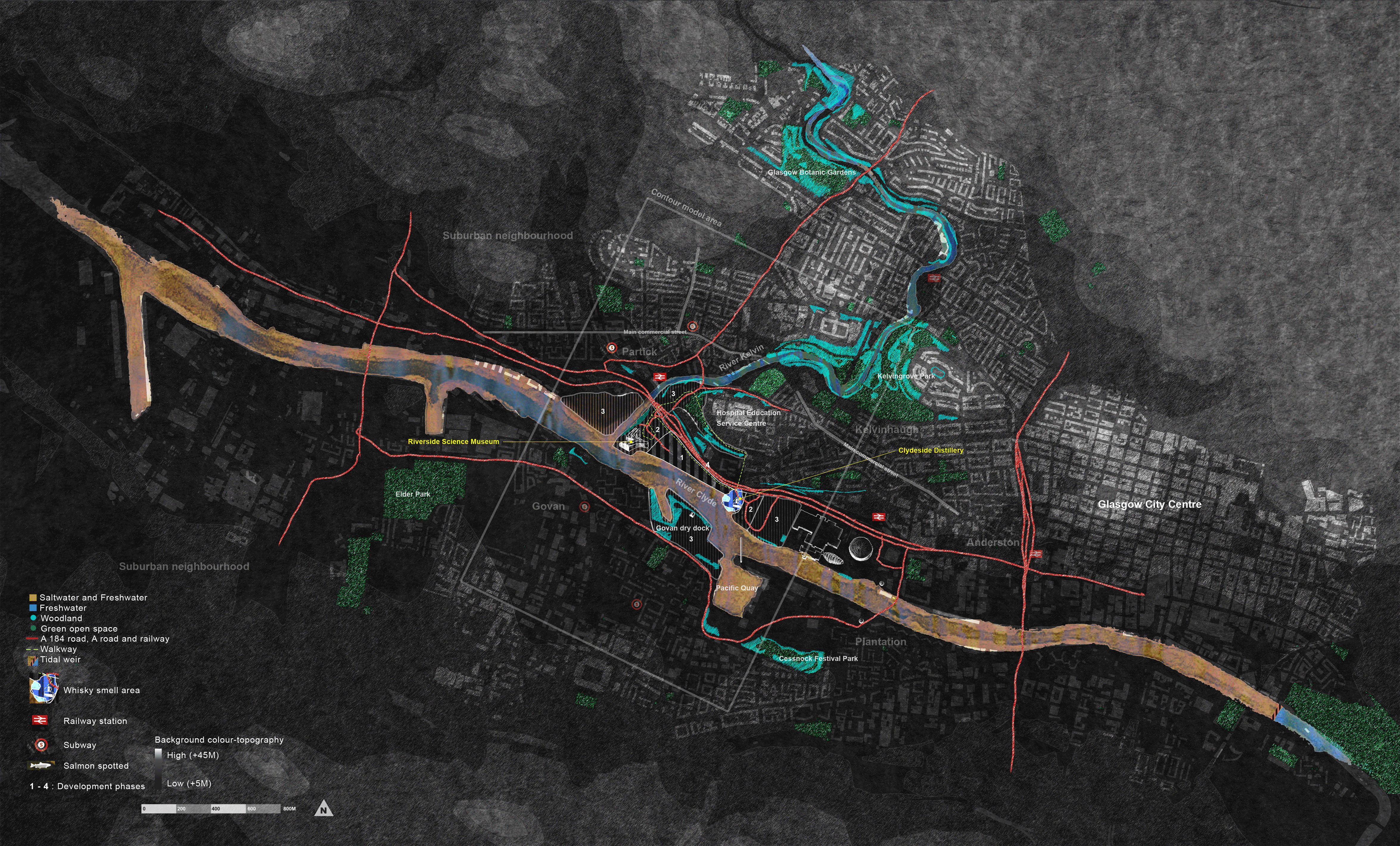


Topography and landmarks

Master plan


Blue dynamic
Freshwater & rooftop management and spatial programmes
Topsoil farming on the rooftop and rainwater harvesting under the ground / autumn view

Freshwater management in summer view
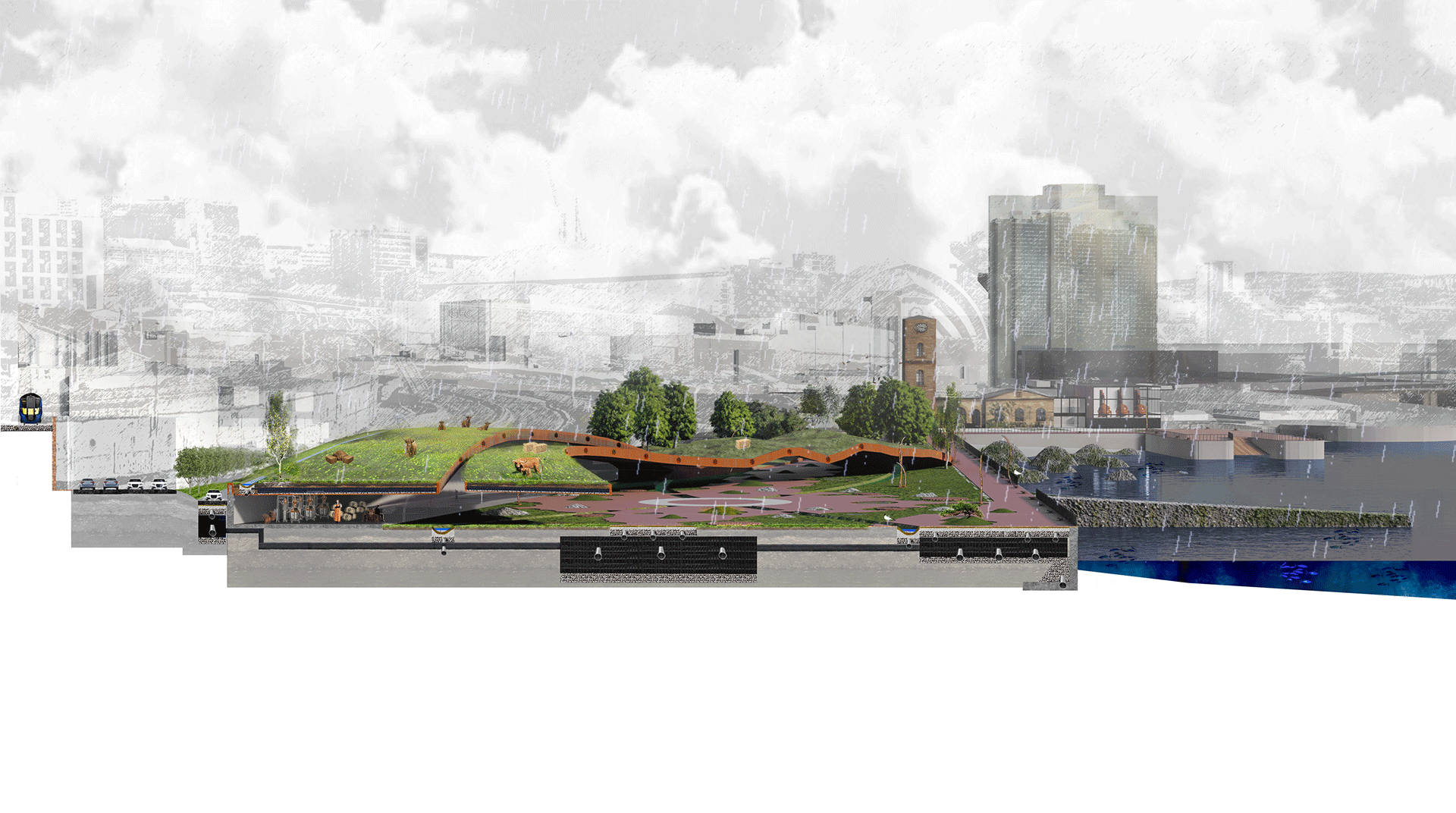

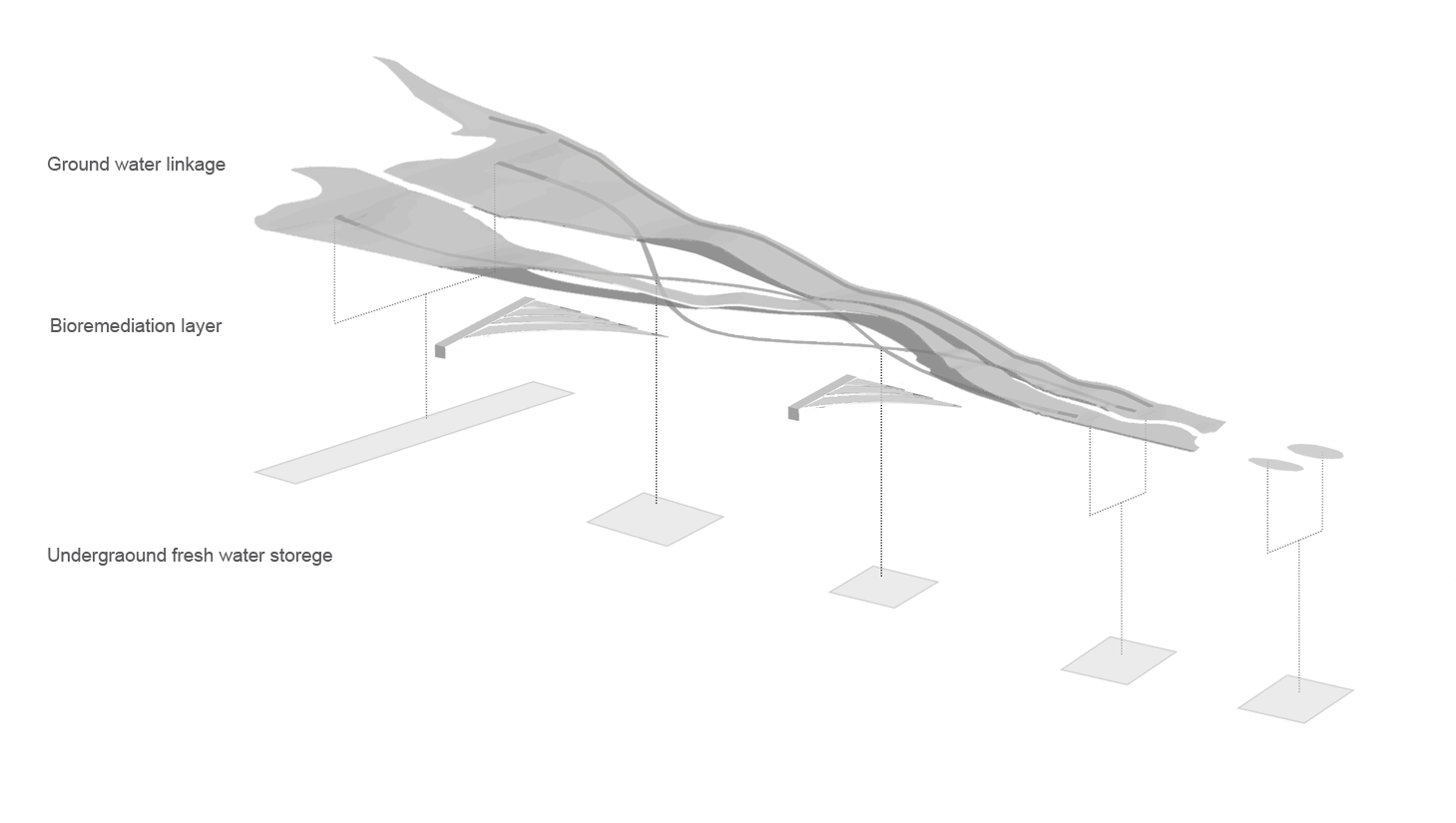
Ecological jetty zone / bio-remediation terrace and swimming pool

Ecological fish nursery zone / a life in the water

Green dynamic

The planting design strategy is based on the eight tastes that constitute the Scotch Whisky Taste Wheel (Malt, 2015) with eight Scottish habitats assigned to each of the eight tastes. These habitats are the archetypes from which the planting characteristics are used to create designed plant communities. They are the result of applying contemporary ecological science to planting design, with the aim of maximizing their sustainability without neglecting the aesthetic and functional needs of the users of the urban distillery landscape.
The designed plant communities have been adapted to fit in with the closed-loop specified within industrial ecology theory by specifying plants that are used as the raw materials for the whisky distillation process and/or provide functional programmes such as urban farming and low-impact tourism. For instance, growing barley crops within grassland habitats and using Scottish lowland cattle as part of the sustainable maintenance of the forb-rich grasslands. A traditional orchard and sub-shrub communities provide fruit for the community centre.
The planting strategy is flexible, adaptable and will result in dynamic and vibrant planting schemes that provide functional cultural programs whilst supporting a greater range of biodiversity within an extensive mosaic of designed habitats. It is used to provoke a strong emotional response in visitors whilst providing an opportunity for them to connect with nature. The planting scheme will create a distinct Scotch Whisky atmosphere based on the memories inherent in the layers found on the site.
Planting Design Strategy
Mosaic of designed habitats framework


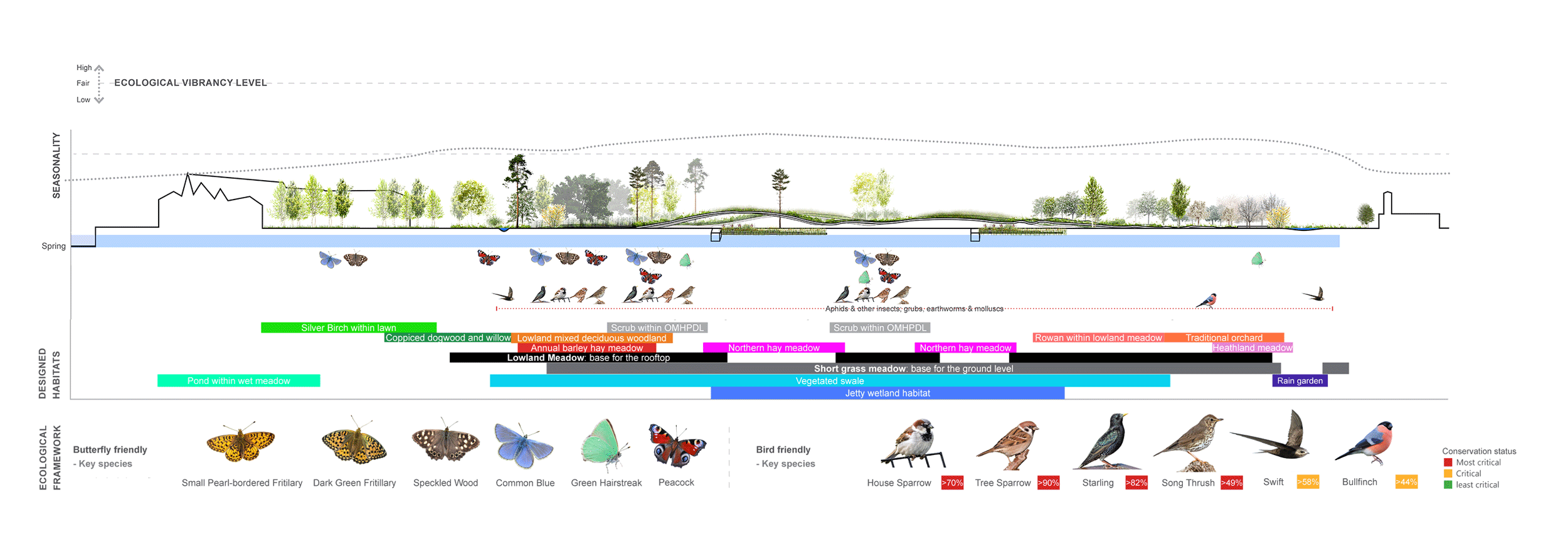
Seasonality and butterfly & bird-friendly framework
Shade analysis for ground level planting

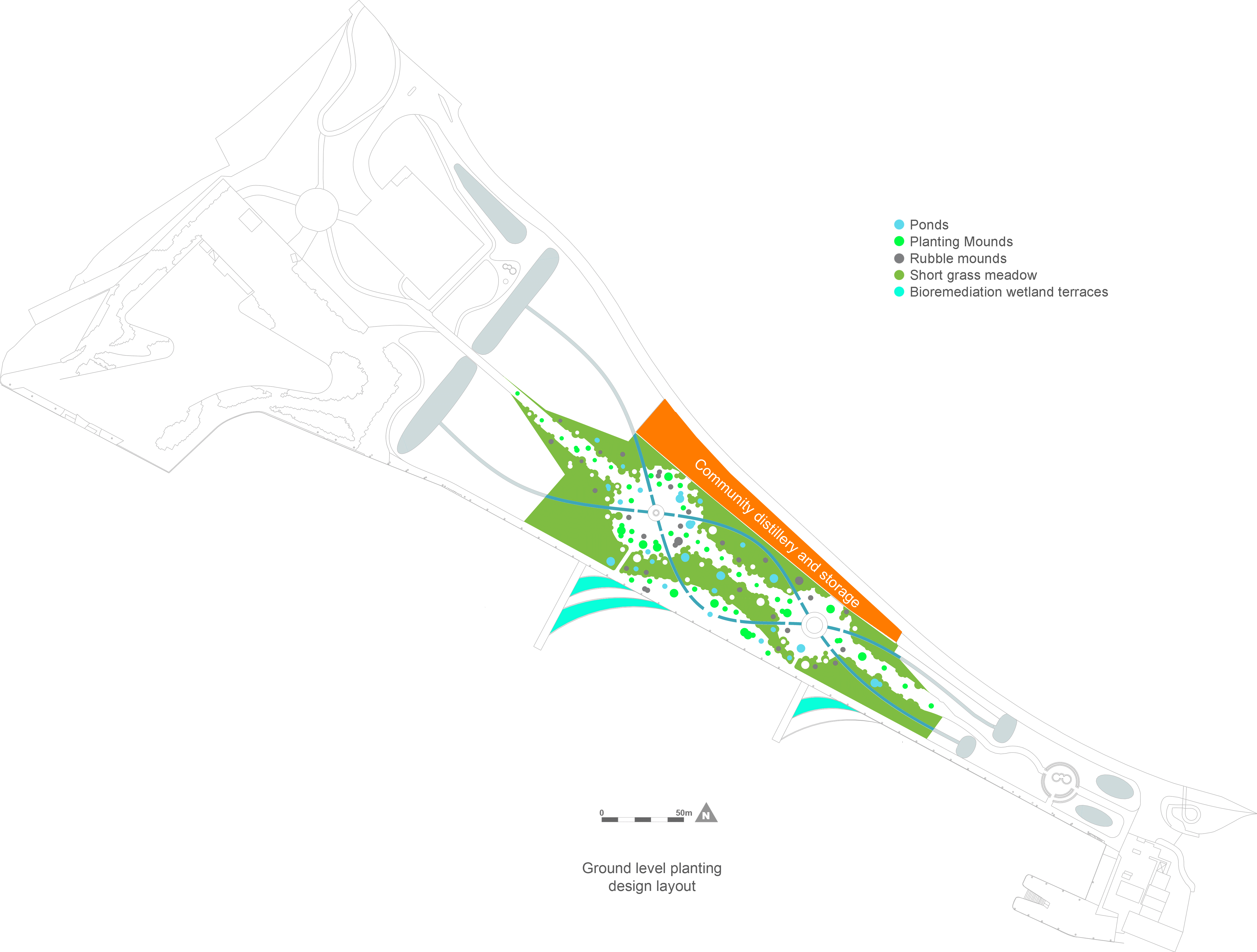
Ground level planing composition












